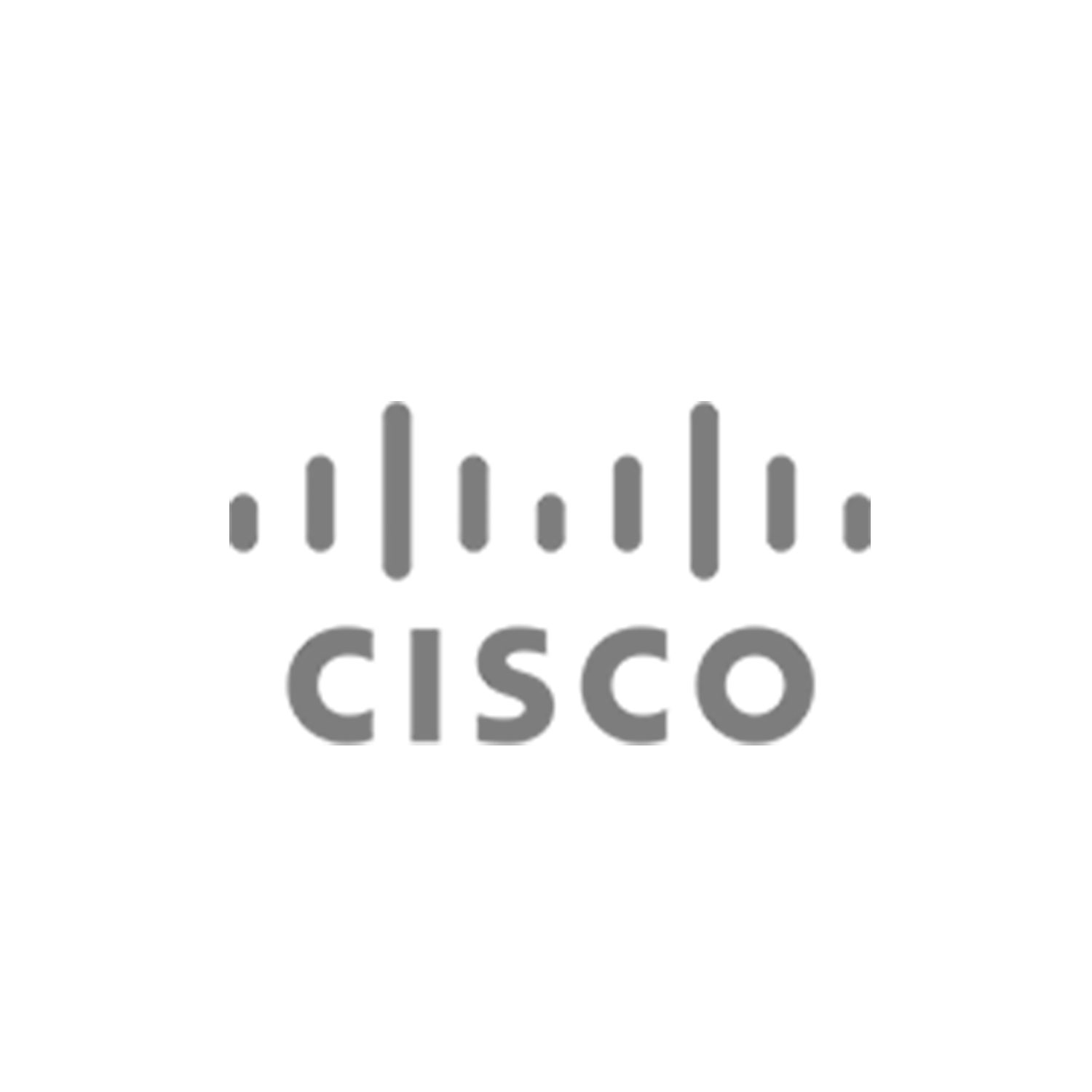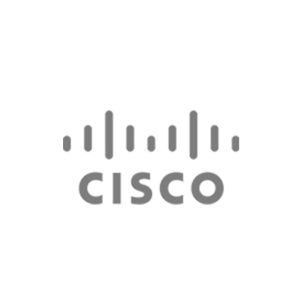Description
Who should attend
The primary audience for this course is as follows:
- IT Staff and Managers
- Network and Systems Personnel and Engineers
- Small to mid-sized organizations that require fundamental knowledge on networking terms/concepts and configuration guidance for Meraki equipment
- This also includes organizations looking to implement remote sites, provide a guest wireless solution, and collect user analytics
Course Objectives
Following completion of this course, students will understand, Install, Configure, Monitor, and Troubleshoot the following:
- Navigate and Configure the Dashboard
- Add MX / MR / MS / MV devices to the Dashboard
- Understand and Configure Configuration Templates
- Understand and Configure Group Policies
- Manage / Configure / Integrate Users and Radius Policies
- Configure, Monitor, and Troubleshoot MX Firewalls
- Troubleshoot devices and Connectivity
Outline: Meraki MX SDWAN/Security Installing, Configuring, Monitoring, and Troubleshooting (MXSDWAN-ICMT)
Module 0: Introduction
- Module Introduction
- Topic List
- Lesson 1: Introductions
- Course Goal
- WebEx Basics
- General Administration
- Introductions
- The Integrated Cisco Network
- Module Summary
Module 1: Introduction to Meraki
- Module Introduction
- Lesson 1: Why Cisco Meraki?
- Lesson 2: Meraki Product Overview
- Topic List
- Cloud Management
- Meraki MS Switches
- Meraki MR Wireless Access Points
- Meraki MX Security and SD-WAN Appliances
- Meraki MV Vision Security Cameras (MG and MT)
- Meraki Systems Manager (SM)
- Meraki MT Sensors Access Points
- Cisco Meraki Insight
- Topic List
- Lesson 3: Meraki API Overview
- Lesson 4: Meraki Licensing and Support
- Enterprise Support and Hardware Warranties
- Cisco Meraki Documentations
- Module Summary
Module 2: Cloud Management with the Meraki Dashboard
- Module Introduction
- Topic List
- Lesson 1: Overview of the Meraki Dashboard
- The Cisco Meraki Dashboard
- The Meraki Phone App
- Dashboard: Organizational Structure
- Meraki Dashboard Best Practices – Campus
- Dashboard Compliance and Data Protection
- Cloud Reliability
- Loss of Connectivity to the Cisco Meraki Cloud
- Safe Configuration
- Meraki Dashboard Login (1)
- Create Dashboard Account (1)
- Create Dashboard Account and Organization
- Verify Created Account
- First Login to New Organization
- Account Login with Multiple Assigned Organizations
- Manage Multiple Organizations
- View Health Status for Multiple Organizations (1)
- Meraki Dashboard Best Practices – Multiple Locations
- Dashboard Search
- Logged in User Profile
- Modify User Profile (1)
- Announcements
- Lesson 2: Help & Support
- Meraki Help
- Dashboard – Help – Get Help (1)
- Dashboard – Help – Community
- Dashboard – Help – Marketplace
- Dashboard – Help – Cases
- Dashboard – Help – Data Protection Requests
- Dashboard – Help – New Features
- Dashboard – Help – Firewall Rules Info
- Dashboard – Help – API Docs
- Dashboard – Help – Hardware Replacement
- Dashboard – Give Your Feedback
- Lesson 3: Organizational Wide Configure Settings
- Organizational Menu Settings
- Settings – Org Name and Security Settings
- Settings – Authentication (1)
- Configuring SAML SSO with ADFS
- Configuring SAML SSO with OneLogin
- Settings – Administration Settings
- Settings – Privacy and Support Access Settings
- Settings – SNMP Configuration
- Settings – Threat Grid
- Settings – Dashboard API Access
- Settings – Delete This Organization
- Organization > CONFIGURE > Configuration Sync
- Configuration Sync
- Organization > CONFIGURE > MDM
- Organization > CONFIGURE > Administrator
- Create Administrator Account – Org Access
- Create Administrator Account – Network Access
- Create Administrator Account – Camera Access
- Create Administrator Account
- Verify Administrator Account
- Deleting an Administrator Account
- Organization > Configure > Camera Roles
- Organization > Configure > License Info
- License Information – Co-Termination
- Add Licenses to Organization – Co-Termination
- License History – Co-Termination
- Converting to PDL (Per Device Licensing) (1)
- Licensing & Inventory Page – PDL (1)
- Organization > CONFIGURE > Create Network
- Create Network – Setup Network
- Create Network – Select Devices from Inventory
- Create Network – Add Devices
- Finding Meraki Order Number
- Delete Networks
- Organization > Configure > Inventory
- Organization > Inventory – Searching for Devices
- Organization > Inventory – Claiming Devices
- Organization > Inventory – Unclaiming Devices
- Organization > Add a Device to a Network
- Recovering a Missing or Stolen Device
- Organization > Monitor > Overview > Networks
- Organization > Monitor > Overview > Networks Tags
- Organization > Monitor > Overview > Devices
- Organization > Monitor > Change Log
- Organization > Monitor > Login Attempts
- Organization > Monitor > Security Center (1)
- Organization > Monitor > Location Analytics (1)
- Organization > Monitor > VPN Status
- Organization > Monitor > Firmware Upgrades
- Firmware Upgrades – Scheduling Firmware Upgrades (1)
- Organization > Monitor > Firmware Upgrades (1)
- Organization > Firmware Upgrades > Overview
- Organization > Firmware Upgrades > Firmware Status
- Organization > Firmware Upgrades > Firmware Release Notes
- Organization > Firmware Upgrades > Firmware Roll Back (1)
- Firmware Upgrades Through APIs
- Organization > Monitor > Summary Report (1)
- Organization > Summary Report – Anomalies
- Organization > Summary Report – Clients with High Usage
- Organization > Summary Report – Usage stats
- Organization > Summary Report – Sessions
- Organization > Top SSIDs by Usage
- Organization > Summary Report – Top Devices
- Top Device Models by Usage
- Top Security Appliances by Utilization
- Summary Report – Port Utilization Graph
- Summary Report – Client Stats
- Summary Report – Top Clients by Usage
- Clients
- Organization – Top Client Device Manufacturers
- Organization – Top Operating Systems by Usage
- Organization – Top Application Categories
- Organization – Top Applications by Usage
- Organization – Power Details
- Lesson 4: Network-Wide Settings
- Network-Wide
- Network-Wide > Configure > General (1)
- Network-Wide > General > Traffic Analysis
- Network-Wide > General > Location and Scanning
- Network-Wide > General > SMS Auth with Twilio
- Network-Wide > General > CloudShark
- Network-Wide > Wireless Multicast to Unicast Conversion
- Network-Wide > General > Device Configuration (1)
- Network-Wide > General > Reporting > Syslog
- Network-Wide > General > SNMP
- Network-Wide > General > Reporting > Location
- Network-Wide > General > NetFlow
- Network-Wide > General > Firmware Upgrades
- Network-Wide > General > Switch & Wireless Alternate Management Interface (1)
- Network-Wide > General > Status & APIs
- Network-Wide > General > Status
- Network-Wide > General > Umbrella
- Network-Wide > Administration > Org Admins
- Network-Wide > Administration > Network Admin
- Network-Wide > Administration > Guest Ambassadors
- Network-Wide > Admin > Port Management Privileges
- Network-Wide > General > Camera-Only Admins
- Network-Wide > Users > Guest Access
- Network-Wide > Users (1)
- Network-Wide > Group Policy
- Network-Wide > Group Policy > New Group
- Network-Wide > Group Policy > Schedule
- Network-Wide > Group Policy > Bandwidth
- Network-Wide > Group Policy > Hostname Visibility
- Network-Wide > Group Policy > Firewall
- Firewall – Layer 7 Rules
- Network-Wide > Group Policy > Umbrella
- Network-Wide > Group Policy > Traffic Shaping (1)
- Network-Wide > Group Policy > Wireless Only
- Network-Wide > Group Policy > Security Appliance Only
- Network-Wide > General > Add Devices
- Network Wide > Monitor > Clients (1)
- Searching for Clients
- Modifying Columns
- Network Wide > Monitor > Clients > Applications
- Network Wide > Monitor > Clients > Ports
- Network Wide > Monitor > Clients > HTTP Content
- Network Wide > Monitor > Clients > Custom Pie Chart
- Changing the Policies Applied to a Client
- Adding a Client
- Display Client Information – Overview (1)
- Display Client Information – Connections (1)
- Display Client Information – Performance (1)
- Display Client Information – Timeline
- Network-Wide > Monitor > Traffic Analytics (1)
- Network-wide > Monitor > Topology
- Topology – L2
- Topology – L3
- Lesson 5: Packet Captures
- Packet Capture for Multiple Devices (1)
- Event log (1)
- Lesson 6: Location / Mapping Devices
- Maps & Floor Plans (1)
- Maps & Floor Plans – Drag & Drop Devices
- Maps & Floor Plans – Assign Devices to…
- Maps & Floor Plans – Geolocate Devices (1)
- Maps & Floor Plans (1)
- Lesson 7: Configuring Templates
- Organization > Monitor > Configuration Templates
- Templates
- Configuration Templates > Create New Template (1)
- Configuration Templates
- Unbinding Networks from a Template
- Splitting Configuration Templates
- Combining Configuration Templates
- Deleting a Configuration Template
- MR – Wireless Network Templates
- MX/Z3 – Template VLAN IP Address Range Allocations
- MX/Z3 – Template VLAN IP Address Range Allocations
- VLAN Templates
- Configuration Templates (1)
- MS Templates
- Switch Profiles
- Configuration Templates > Local Overrides (1)
- Configuration Templates > Local Overrides
- Module Summary
Module 3: Meraki MX Security Appliances
- Module Introduction
- Topic List
- Lesson 1: What is MX?
- One Unified Platform
- Complete Connectivity and Threat Management Solution
- Built-in Ironclad Security
- Security Integrations/Interoperability
- Cisco SourceFire AMP
- AMP & Threat Grid (1)
- Advanced Malware Protection for Meraki MX
- Umbrella Integration for MX and Z-series
- DNS/web-layer Security – Solution Overview
- Backed by Cisco Talos Threat Intelligence
- Cisco SD-WAN Solutions
- Reliable, Cost Effective Connectivity with SD-WAN
- Automated Site-to-Site VPN (Auto VPN)
- VPN Options
- High Availability and Path Redundancy
- SD-WAN Functionality for the Branch
- Connections that Fit your Business and Location Needs
- VPN Health, Bandwidth, and Performance Monitoring
- MX Appliance Licensing
- MX Sizing Guide
- Lesson 2: Meraki Security and SD-WAN Portfolio
- Teleworker Z3
- Small Branch – MX64/MX64W
- Small Branch – MX65/MX65W
- Small Branch – MX67/MX67W
- Small Branch – MX67C
- Small Branch – MX68/MX68W
- Small Branch – MX68CW
- Small Branch – MX75
- Medium Branch – MX84
- Medium Branch – MX100
- Medium Branch – MX85
- Medium Branch – MX95
- Medium/Large Branch – MX105
- WAN behavior on MX75/85/95/105 (1)
- MX250/MX450 New Design (1)
- Large Branch, Campus / Concentrator (1)
- Virtual Platforms – vMX
- Virtual Platforms
- New MX Appliance Overview
- Meraki MX – Local Status Page
- MX Local Status Page – Connection
- MX Local Status Page – Configure (1)
- MX Local Status Page – Set Interface Addresses
- MX Local Status Page – Ethernet
- Claim the MX Appliance
- MX Create a Network for MX Appliance
- Create Combined Network for MX in HQ
- Check Newly Added Appliance Status
- Change Name of Device
- Set Location Data for Maps
- Configure Warm Spare
- View WAN Uplinks
- Dynamic DNS
- Device Tags & Notes
- Remove MX From Network
- Appliance Status – Summary Tab
- Appliance Status – Uplink Tab (1)
- Appliance Status – Location Tab (1)
- Tools Tab > Ping
- Tools Tab > Reboot Device
- Tools Tab > Blink LEDs
- Tools Tab > Dashboard Throughput
- Tools Tab > Traceroute
- Tools Tab > MTR Traceroute
- Tools Tab > DNS Lookup
- Tools Tab > ARP Table
- Tools Tab > Test Umbrella Connectivity
- Addressing & VLANs
- Mode: Pass – Through or VPN Concentrator Mode
- Mode: Routed
- Addressing & VLANs – Client Tracking (1)
- Addressing & VLANs – Enabling VLANs
- Addressing & VLANs – Adding a VLAN
- Edit MX Built-in Port Configuration
- Static Routes
- Security Appliance – Configure – DHCP
- DHCP – Turn up and Lease Time
- DHCP – DNS Name Servers
- DHCP – Boot options
- DHCP – Options
- DHCP – Reserved IP Ranges (Excluded Addresses)
- DHCP – Fixed IP Assignments (Reservations)
- Lesson 3: Meraki Firewall Configuration
- Security Appliance – Configure – Firewall (1)
- Inbound Firewall Logging
- Layer 3 vs Layer 7 Firewall
- Firewall – Outbound Rules
- Firewall – Cellular Failover Rules
- Firewall – Security Appliance Services
- Firewall – Layer 7 Rules
- Geo-IP Based Firewalling
- Forwarding Rules – Port Forwarding
- Forwarding Rules – 1:1 NAT
- Forwarding Rules – 1:Many NAT
- Bonjour Forwarding
- IP source address spoofing protection
- Lesson 4: Meraki Site-to-Site VPN
- Automated Site-to-Site VPN (Auto VPN)
- What is a VPN?
- Site-to-Site VPN
- Configuring Site-to-Site VPN AutoVPN
- Site-to-Site VPN – Hub Configuration
- Site-to-Site VPN – Hub Configuration with Exit Hub
- Site-to-Site VPN – Spoke Configuration Split Tunnel
- Site-to-Site VPN – Spoke Configuration Full Tunnel
- Site-to-Site VPN – Local Networks
- Site-to-Site VPN – NAT Traversal
- Site-to-Site VPN – Remote VPN Participants
- Site-to-Site VPN – VPN Subnet Translation
- Site-to-Site VPN – Non-Meraki VPN Peers
- Site-to-Site VPN – Non-Meraki IPSEC Policy
- Site-to-Site VPN – VPN Firewall Rules
- Site-to-Site VPN – Monitor Status
- Lesson 5: Meraki Client VPN
- Enable Meraki’s L2TP Client VPN
- Configure Meraki’s L2TP Client VPN (1)
- Meraki’s Client VPN Authentication Methods (1)
- VPN Clients
- Enable the AnyConnect Client VPN (1)
- AnyConnect Client VPN Authentication Methods (1)
- AnyConnect Client VPN (1)
- Lesson 6: Meraki Active Directory
- Active Directory Integration (1)
- Apply Group Policy to Active Directory Groups
- Lesson 7: Meraki SD-WAN and Traffic Shaping
- Reliable, Cost Effective Connectivity with Meraki SD-WAN
- Intelligent path control to suit your needs
- SD-WAN & Traffic Shaping (1)
- Lesson 8: Meraki Threat Protection
- Threat Protection – AMP
- Threat Protection – IDS/IPS
- Threat Protection – Umbrella Protection
- Lesson 9: Meraki Content Filtering
- Content Filtering (1)
- Lesson 10: Meraki Access Control
- Access Control
- Access Control > Network Access (1)
- Network Access > Access Control > Radius (1)
- Access Control > Network Access > Facebook (1)
- Network Access > Access Control > Google (1)
- Lesson 11: Meraki Splash Page
- Splash Page
- Customize Splash URL
- Customize Splash Page (1)
- Preview Splash Page – Modern
- Preview Splash Page – Fluid
- Create Custom Themed Splash Page
- Lesson 12: Security and SD-WAN Wireless Concentrator
- Teleworker VPN / L3 roaming (1)
- Creating Teleworker Networks
- Module Summary




